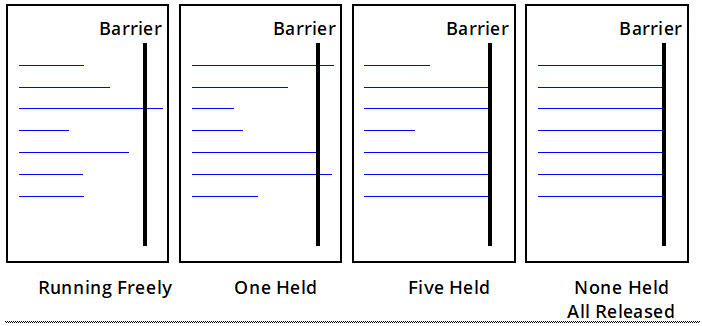Barrier Point Illustration
Creating a barrier point tells TotalView to hold a process when it reaches the barrier. Other processes that can reach the barrier but aren’t yet at it continue executing. One-by-one, processes reach the barrier and, when they do, TotalView holds them.
When a process is held, it ignores commands that tell it to execute. This means, for example, that you can’t tell it to go or to step. If, for some reason, you want the process to execute, you can manually release it using the dunhold command.
When all processes that share a barrier reach it, TotalView changes their state from held to released, which means they no longer ignore a command that tells them to begin executing.
The following figure shows seven processes that are sharing the same barrier. (Processes that aren’t affected by the barrier aren’t shown.)
Figure 45, Running to Barriers

For more information on barriers, see Barrier Points.





